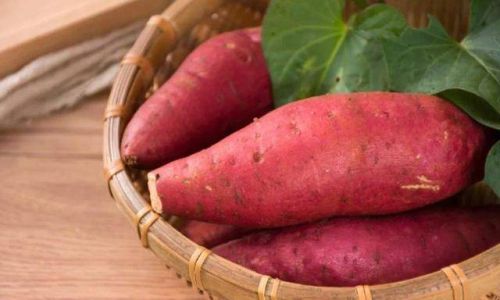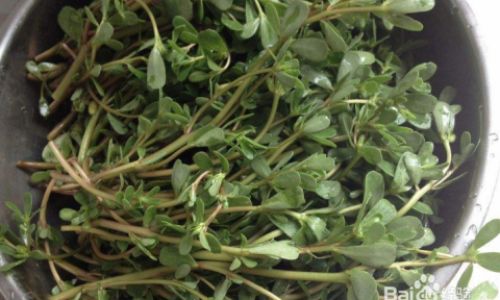Table of content
- Temperature
- Humidity
- Ventilation
- Light
- Pests and Diseases
- Harvesting
- Curing
- Sorting and Grading
- Cleaning
- Room Temperature Storage
- Paper Bags or Mesh Bags
- Root Cellars
- Cold Storage (Refrigeration for Limited Periods)
- Sand or Soil Storage
- Commercial Storage Facilities
- Temperature and Humidity Checks
- Visual Inspection
- Ventilation Checks
- Pest Control
Introduction
Sweet potatoes, also known as yams or kumara in various regions, are a staple food crop renowned for their versatility, nutritional value, and delicious taste. Whether enjoyed roasted, boiled, baked, or incorporated into various dishes, sweet potatoes offer a rich source of dietary fiber, vitamins, and minerals. However, maintaining their freshness and quality post-harvest can be challenging, especially if not stored properly. Improper storage can lead to spoilage, characterized by rot, mold, and a significant loss of nutritional value. This guide delves into the intricacies of storing sweet potatoes to ensure they remain in optimal condition for as long as possible.

Understanding Sweet Potato Storage Requirements
Before diving into specific storage methods, it’s crucial to understand the fundamental requirements for storing sweet potatoes. These tubers thrive in specific environmental conditions that, when replicated in storage, can significantly extend their shelf life.
Temperature
Temperature is a critical factor in sweet potato storage. Ideally, sweet potatoes should be kept at a temperature range between 55°F to 60°F (13°C to 16°C). This temperature range slows down the respiration rate of the tubers, reducing the rate of starch conversion to sugar, which can lead to softening and an undesirable sweet taste. Temperatures below 50°F (10°C) can cause chilling injury, resulting in hardening of the core and increased susceptibility to rot. Conversely, temperatures above 70°F (21°C) accelerate respiration and moisture loss, promoting rapid deterioration.
Humidity
Maintaining an appropriate humidity level is equally important. Sweet potatoes require a relative humidity of around 85% to prevent dehydration. High humidity helps retain moisture in the tubers, keeping them firm and fresh. Low humidity can lead to shriveling and weight loss, reducing both quality and marketability.
Ventilation
Adequate ventilation is necessary to control the build-up of ethylene gas, a natural byproduct of plant respiration. Ethylene can promote ripening and senescence in fruits and vegetables, including sweet potatoes. Proper ventilation ensures that this gas is dispersed, maintaining the tubers in a dormant state.
Light
Sweet potatoes should be stored in the dark. Exposure to light, especially direct sunlight, can cause the tubers to develop green patches due to chlorophyll production. While these patches are not harmful, they can affect the appearance and palatability of the sweet potatoes.
Pests and Diseases
Controlling pests and diseases is another vital aspect of sweet potato storage. Insects, fungi, and bacteria can quickly spread and cause widespread damage. Sanitation and the use of pest-free storage facilities are essential to prevent infestations.
Pre-Storage Preparations
Before storing sweet potatoes, several preparatory steps can enhance their storage potential.
Harvesting
Harvesting should be done carefully to avoid damaging the tubers. Use sharp, clean tools to minimize wounding, which can provide entry points for pathogens. Harvesting should ideally occur when the soil is dry to prevent soil contamination and to make handling easier.
Curing
Immediately after harvesting, sweet potatoes should undergo a curing process. Curing involves exposing the tubers to warm, well-ventilated conditions (around 80°F to 85°F, or 27°C to 29°C) with high humidity (90%-95%) for about 10 to 14 days. This period allows the tubers to heal any wounds, develop a protective skin, and enter a dormant state, which is crucial for long-term storage.
Sorting and Grading
After curing, sort and grade the sweet potatoes based on size, quality, and any visible defects. Remove any tubers that show signs of disease, injury, or infestation. Sorting ensures that only healthy, uniform tubers are stored together, reducing the risk of cross-contamination.
Cleaning
Gently brush off any excess soil from the tubers without washing them. Washing can promote rot by introducing moisture and pathogens into the skin. If absolutely necessary, use a very dilute solution of food-safe disinfectant and ensure the tubers are thoroughly dried before storage.
Storage Methods
Several methods can be employed to store sweet potatoes, each suited to different conditions and durations.
Room Temperature Storage
For short-term storage (up to two weeks), sweet potatoes can be kept at room temperature in a cool, dark, and well-ventilated area. Ensure they are not stacked too high to prevent crushing and maintain good air circulation. This method is suitable for households that consume sweet potatoes frequently.

Paper Bags or Mesh Bags
For slightly longer storage (up to a month), place sweet potatoes in paper bags or mesh bags. These materials allow for adequate ventilation while protecting the tubers from light. Avoid using plastic bags, which can trap moisture and promote rot.
Root Cellars
Root cellars are traditional storage structures designed to maintain cool, humid conditions ideal for storing root vegetables like sweet potatoes. If you have access to a root cellar, it’s an excellent choice for long-term storage. Ensure the temperature and humidity are within the optimal ranges mentioned earlier. Sweet potatoes can be stored in crates, baskets, or on shelves to facilitate air circulation.
Cold Storage (Refrigeration for Limited Periods)
While not ideal, refrigeration can be used for very short-term storage (a few days) if no other options are available. Wrap sweet potatoes individually in paper towels and place them in the crisper drawer of the refrigerator. Note that prolonged exposure to refrigerator temperatures can cause chilling injury.
Sand or Soil Storage
In some regions, storing sweet potatoes in moist sand or soil is a traditional method. This method mimics the natural conditions in which the tubers grow. Fill a container or pit with moist (not wet) sand or soil and bury the sweet potatoes, leaving the tops slightly exposed. Cover the container or pit to retain humidity and place it in a cool, dark location. Monitor the moisture level regularly and add water if necessary to maintain the desired humidity.
Commercial Storage Facilities
For commercial-scale storage, specialized storage facilities equipped with climate control systems are necessary. These facilities maintain consistent temperature, humidity, and ventilation conditions to ensure optimal storage conditions for extended periods (up to several months). Commercial storage often involves the use of pallets, racks, and automated systems to facilitate handling and monitoring.
Monitoring and Maintenance
Regular monitoring is crucial to ensure that stored sweet potatoes remain in good condition.
Temperature and Humidity Checks
Use hygrometers and thermometers to regularly check the temperature and humidity levels in the storage area. Adjust conditions as necessary to maintain the optimal range.
Visual Inspection
Perform regular visual inspections to check for signs of spoilage, such as mold, rot, or insect infestation. Remove any affected tubers immediately to prevent the spread of contamination.
Ventilation Checks
Ensure that ventilation systems are functioning correctly and that air is circulating freely within the storage area.
Pest Control
Implement pest control measures, such as traps, insecticides (approved for food storage), and regular cleaning, to prevent infestations.
Conclusion
Storing sweet potatoes to prevent spoilage involves a combination of understanding their storage requirements, careful pre-storage preparations, selecting the appropriate storage method, and regular monitoring and maintenance. By following these guidelines, you can ensure that your sweet potatoes remain fresh, firm, and nutritious for extended periods, whether for household use or commercial distribution. Proper storage not only preserves the quality of the tubers but also maximizes their nutritional value and economic potential, making them a reliable and delicious staple throughout the year.





0 comments